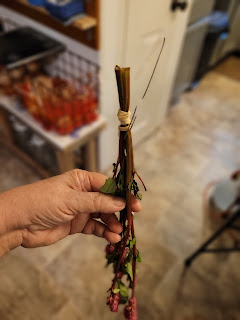I've finally settled on my favorite homemade seed packet design.
(A printable template is available. Folding instructions are in this post.)
Please note that I occasionally recommend a resource or product that I think you may like. If you buy something recommended on this blog, I may get an affiliate commission that can help to support our work, but will never influence our recommendations or affect prices for our products.

It's based on Robert Pavlis's very useful idea for folding any handy paper into a homemade seed packet.
His YouTube video,
"How to Make a Simple Paper Seed Envelope (packet)"
https://www.youtube.com/watch?v=VvGrIAkcv5k
shows how to quickly fold a seed packet to any size you need, from any paper available, so that you always have a way to save seeds, no matter where you travel.
Pavlis's design allows you to collect anything from large seed-heads to tiny seeds, folded safely into a packet that is easily slipped into your pocket, purse, or pack. And you can write all the information you need to remember about the plant right on the packet with a pen or pencil!
Since I want my packets to accept printed information, my seed packets start with printer paper. The most common printer paper in the U.S., 8 1/2" x 11", can be neatly folded into a standard 3" x 5" seed packet like this:
- First, fold the 11" length at 5" and 10" (I also fold at 10 1/4" to make a top flap easier to close)
- Then, fold the 8 1/2" length at 2 3/4" and 5 3/4" (this gives a center panel 3" wide for printing)
A supply of my pre-folded blank packets is ready to carry in my gardening basket and to slip into my pocket when I go out.
Here's an example of a printed packet for Anise Hyssop seeds I collected this week:
- folded in half, then in thirds
- printed front and back showing
I highly recommend Robert Pavlis's YouTube channel, Garden Fundamentals, with its many useful and informative videos, and his blogs are great reading and references on many topics!
https://www.gardenfundamentals.com/gardening-information/
https://www.gardenmyths.com/sample-page/
(updated link on 8/24/22)































